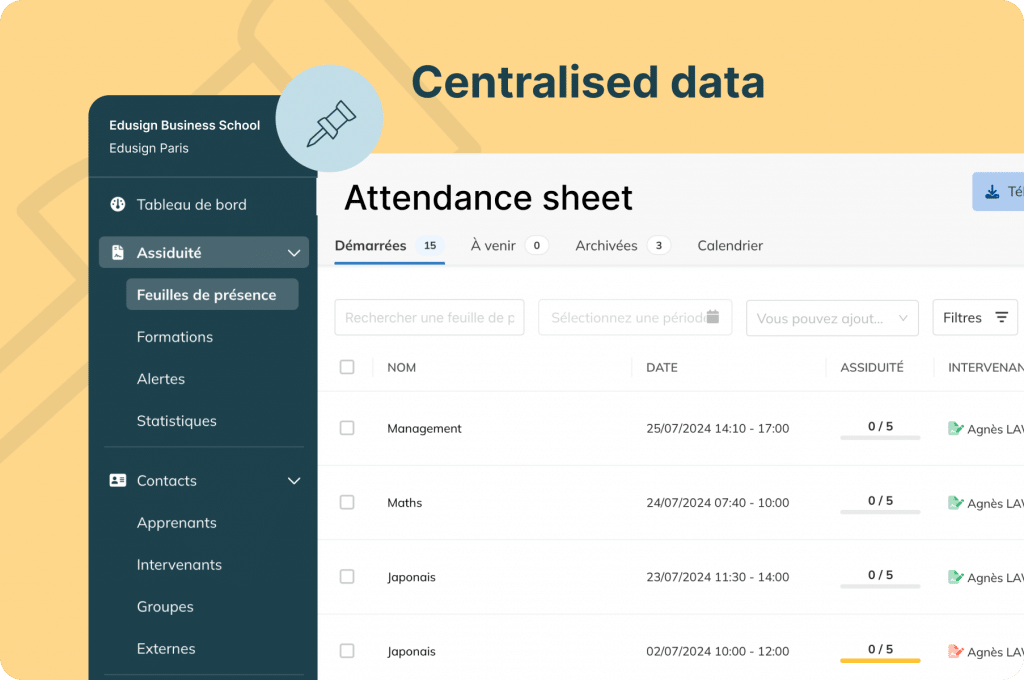The digitalization of training has emerged as a sweeping transformation, fundamentally reshaping learning and management practices for training providers and companies. While the promises of increased efficiency and modernization are appealing, one central question remains for decision-makers: are these investments truly profitable? The key to answering lies in rigorous analysis, particularly through calculating return on investment (ROI). Although this calculation can sometimes seem complex—especially when evaluating intangible benefits—it is essential for guiding strategy and justifying decisions. This article aims to demystify the ROI calculation process as applied to digitalized training, by identifying costs, benefits, and key optimization levers.

Why calculate the ROI of your training digitalization? Key challenges
Engaging in ROI calculation for digitalization projects is not just an accounting exercise—it’s a strategic process with multiple stakes. First and foremost, it enables organizations to justify technological investments to key stakeholders—whether general management, funders, or a board—by providing tangible, data-driven arguments. It’s also a valuable guide for making informed decisions about which digital tools to adopt and how to prioritize digitalization efforts.
By measuring the effectiveness of digital solutions once implemented—such as remote attendance tracking—organizations can clearly assess their impact and identify areas for improvement to increase profitability. Finally, this approach demonstrates the overall added value of digital transformation and its contribution to the performance of the training organization.
Step 1: identify and accurately quantify digitalization costs
The first phase in calculating ROI is to list and quantify all costs related to digitalization. These costs can be divided into two main categories.
On the one hand, initial costs—or upfront investments—include software license purchases or setup fees for SaaS solutions such as LMS platforms, e-signature tools, or administrative management apps. Additional expenses may include computer hardware (if needed), custom development or tool personalization, and data migration fees.
On the other hand, recurring costs refer to ongoing operational expenses. These typically include monthly or annual SaaS software subscriptions, maintenance and technical support fees, and one often underestimated line item: training internal teams (administrative staff, instructors) to use new digital tools. Also to be considered is the internal time spent on managing, administering, and evolving the adopted digital solutions.
Step 2: identify, quantify, and assign value to the benefits of digitalization
After listing the costs, the next crucial step in calculating ROI is to identify and assign value to all benefits of digitalization.
Direct, quantifiable benefits are often the most obvious—primarily cost savings. For example: significantly reduced administrative costs thanks to the elimination of paper, printing, postal mail, and physical archiving—areas where digital tools have major impact. Also relevant are reduced travel costs for trainers and learners through remote or hybrid learning models, and optimized space rental expenses.
Indirect, quantifiable benefits include productivity and efficiency gains. Time saved by administrative teams and instructors is a key driver, particularly due to automation of time-consuming tasks like registration management, attendance tracking, document distribution, or certificate generation. Other benefits include lower error rates, the ability to train more learners with the same human resources, and better compliance tracking—especially for regulations like Qualiopi—thanks to improved traceability.
Lastly, qualitative benefits, though harder to quantify, are essential: improved learner and trainer experience, more flexible learning paths, and stronger brand image for the training organization. These can be given value through satisfaction surveys or by analyzing metrics such as completion rates or learner engagement.
Step 3: the magic formula and how to calculate ROI
Once all costs and benefits are identified and valued, the ROI calculation can be performed. The most common formula is:
ROI (%) = [(Gains from investment – Cost of investment) / Cost of investment] x 100
In this formula, “Gains from investment” refers to the total valued benefits (direct and indirect) over a defined period, and “Cost of investment” refers to the total of all initial and recurring costs over that same period.
For example, to calculate the ROI of digitalizing attendance management, you would total up the savings from reduced paper use, time saved by admins and instructors (valued at hourly rates), and subtract the cost of the software and training.
It’s critical to define a relevant analysis period—typically one, three, or five years—for the calculation to be meaningful.
Beyond the number: interpreting and leveraging ROI results
Calculating ROI is one thing, but interpreting and leveraging it effectively is another. A positive ROI indicates a profitable investment, but what qualifies as a “good” ROI depends on the organization’s initial goals, risk tolerance, and possibly sector benchmarks.
It is important to analyze which factors carry the most weight: which cost categories are highest? Which benefits generate the most value? This analysis helps identify new levers for optimization.
Thus, ROI becomes a powerful steering tool—for internal communication, for justifying future decisions, and for driving continuous improvement in the digitalization process.

✅ Conclusion: digitalization, a strategic investment to be maximized with the right tools
In conclusion, calculating the ROI of digitalized training is an essential step in turning intuition into data-driven strategy. Far from being just a cost-cutting exercise, digitalization is a structural lever for performance, administrative agility, and pedagogical innovation. But only if the right tools are in place to maximize its value.
🎯 By choosing solutions that are easy to deploy, intuitive, and focused on real-world use—like Edusign—institutions can guarantee a fast, sustainable, and measurable return on investment.
💡 A well-designed tool is not an expense—it’s a force multiplier. It reduces admin workload, secures data, streamlines learner journeys, and frees up time for what truly matters: supporting learners.
📩 Want to measure the concrete benefits digitalization can bring your organization? Contact us to see how Edusign helps turn your processes into value.





